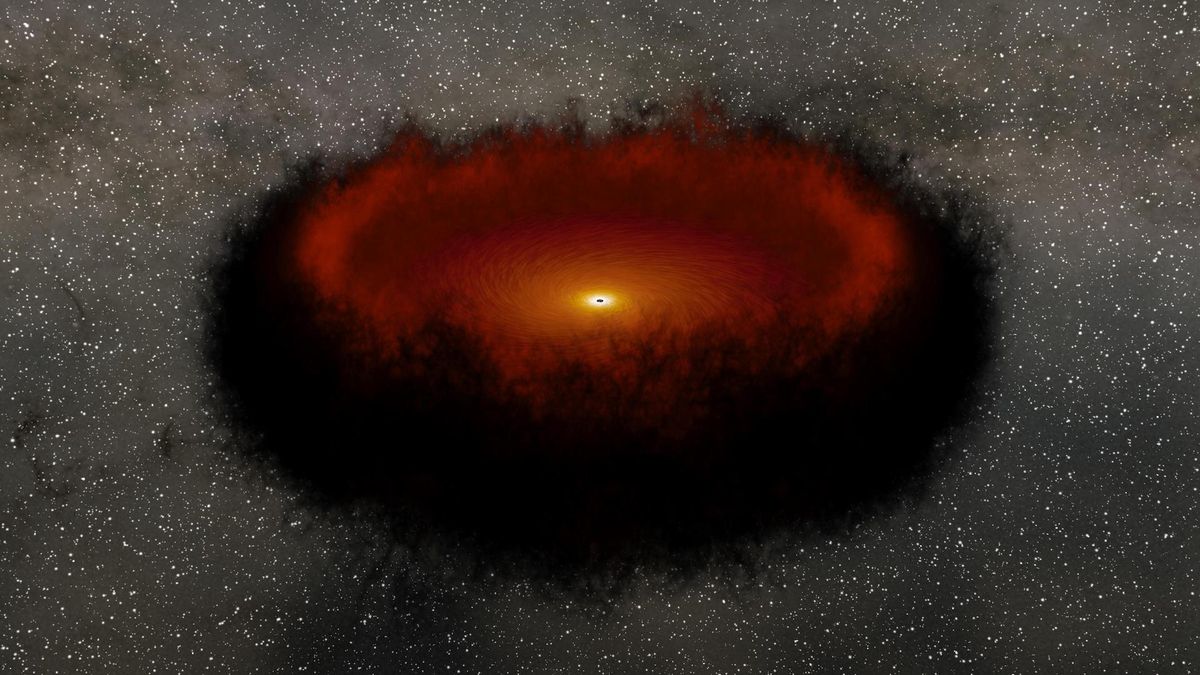A new theoretical study, involving Portuguese physicists João Luís Rosa, Daniela Cordeiro and Francisco Lobo, suggests that a black hole is actually a new type of star called a "gravastar", or "condensed gravitational star".
The theory could finally put an end to some of the discrepancies observed in the behavior of black holes, which defy the laws of physics.
Black holes are some of the most enigmatic objects in the Universe, capable of deforming the fabric of space around them so violently that not even light can escape their gravitational grip.
But apparently, much of what scientists know about these mysterious objects may be wrong. According to the new study, published in April in the journal Physical Review D, black holes may be completely different celestial entities, known as gravastars.
"Gravastars are hypothetical astronomical objects that were introduced in 2001 as alternatives to black holes," the study's first author, João Luís Rosa, who holds a PhD in Physics from IST and teaches Physics at the University of Gdańsk in Poland, explained to Live Science.
"They can be interpreted as stars made of vacuum energy or dark energy: the same type of energy that drives the accelerated expansion of the universe," explains the Portuguese physicist.
German physicist and astronomer Karl Schwarzschild first predicted the existence of black holes in 1915, based on calculations made using Albert Einstein's general theory of relativity.
Over the years, astronomical observations have apparently confirmed the existence of objects that resemble black holes. However, Schwarzschild's description of these space bodies has some flaws.


In particular, the center of a black hole is predicted to be a point of infinitely high density, called a singularity, where all the mass of the black hole is concentrated
However, fundamental physics teaches us that infinities don't exist and that their appearance in any theory signals its inaccuracy or incompleteness.
"These problems indicate that something is wrong or incomplete in the black hole model, and that alternative models need to be developed," explains Rosa. "The gravastar is one of the many alternative models proposed. The main advantage of gravastars is that they don't have singularities."
In another study, published in February in IOP Science, Daniel Jampolski and Luciano Rezzolla, theoretical physicists at Goethe University Frankfurt in Germany, suggested that gravastars may exist inside each other.
Jampolski and Rezzolla's study presents a solution to Einstein's General Relativity field equations that describes the existence of gravastars within gravastars - a hypothetical celestial structure that the two physicists call nestars.
"A nestar is like a Russian matrioska," explained Luciano Rezzolla in a Goethe University press release. "Our solution to Einstein's field equations allows for the existence of gravastars within gravastars."
Like ordinary black holes, gravastars should appear in the final phase of the evolution of massive stars, when the energy released during the thermonuclear combustion of the matter inside is no longer enough to overcome the force of gravity, and the star collapses into a much denser object.
But unlike black holes, gravastars are not expected to have any singularities and are thought to be thin spheres of matter whose stability is maintained by the dark energy they contain.

To find out whether gravastars are viable alternatives to singular black holes, João Luís Rosa and colleagues examined the interaction of particles and radiation with these hypothetical objects.
Using Einstein's theory, the authors examined how the huge masses of hot matter surrounding supermassive black holes would appear if these black holes were in fact gravastars.
They also examined the properties of "hot spots" - giant gas bubbles that orbit black holes at speeds close to light.
Their findings revealed striking similarities between the matter emissions of gravastars and black holes, suggesting that gravastars do not contradict scientists' experimental observations of the Universe.
In addition, the team discovered that a gravastar should appear almost like a singular black hole, creating a visible shadow.
"This shadow is not caused by the trapping of light in the event horizon, but by a slightly different phenomenon called 'gravitational redshift', which causes light to lose energy when it moves through a region with a strong gravitational field," explains João Luís Rosa.
"In fact, when the light emitted by regions close to these alternative objects reaches our telescopes, most of its energy will have been lost to the gravitational field, causing this shadow to appear."
The striking similarities between Schwarzschild's black hole model and gravastars highlight the latter's potential as a realistic alternative, free from the theoretical pitfalls of singularities.
However, this theory needs to be supported by experiments and observations, which the authors of the study believe could be carried out soon.
Although gravastars and singular black holes can behave similarly in many ways, subtle differences in the light emitted can distinguish them.
"To test our results experimentally, we are relying on the next generation of observational experiments in gravitational physics," says Rosa, referring to the Event Horizon Telescope, which hunts black holes, and the GRAVITY+ instrument that is being added to the Very Large Telescope in Chile.
"These two experiments aim to closely observe what happens near the center of galaxies, in particular our Milky Way," concludes the Portuguese physicist.







